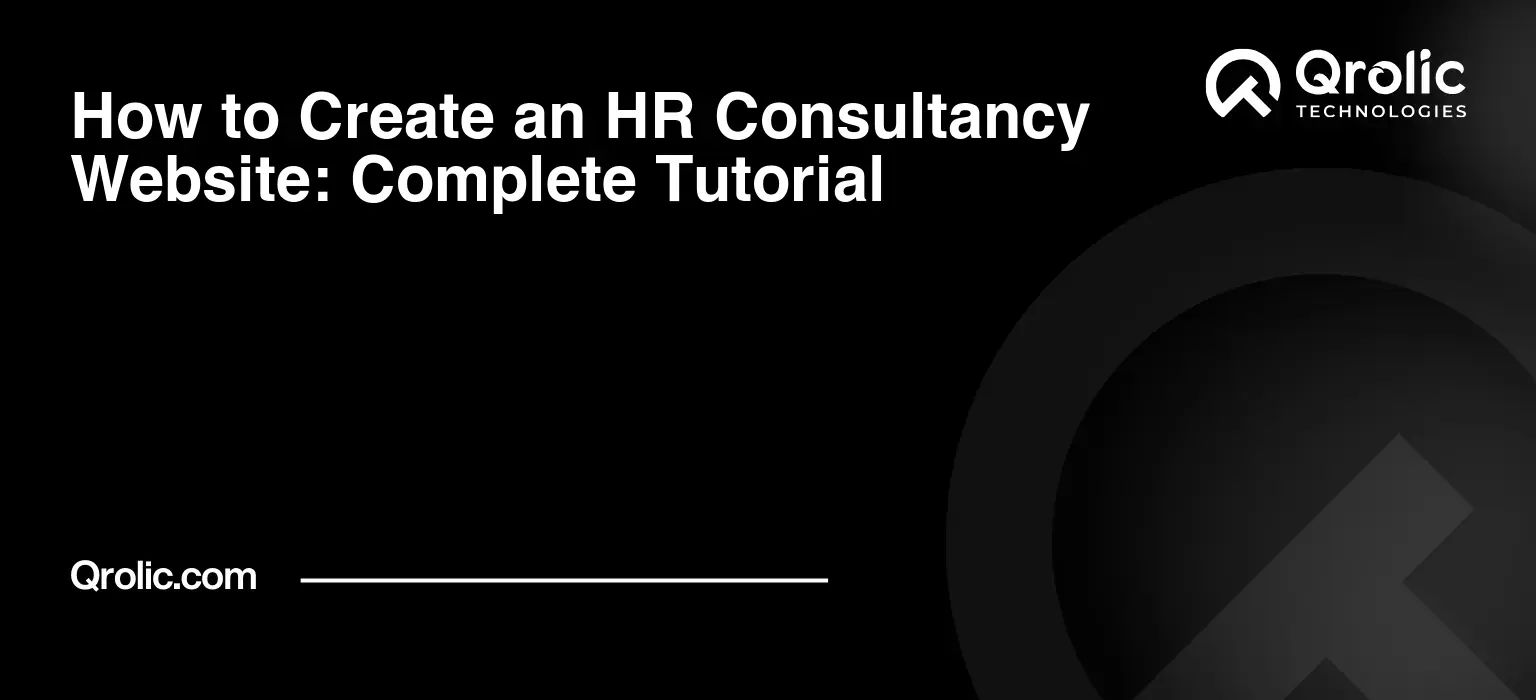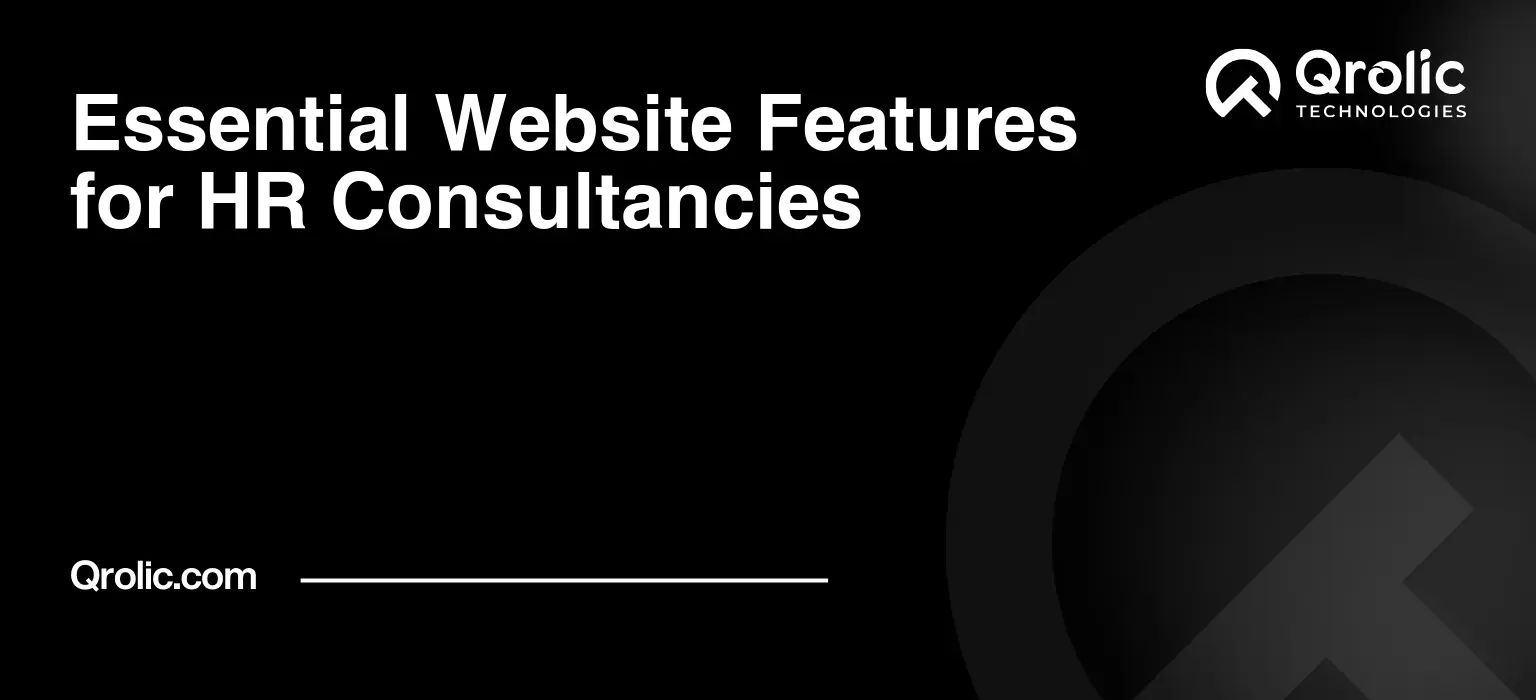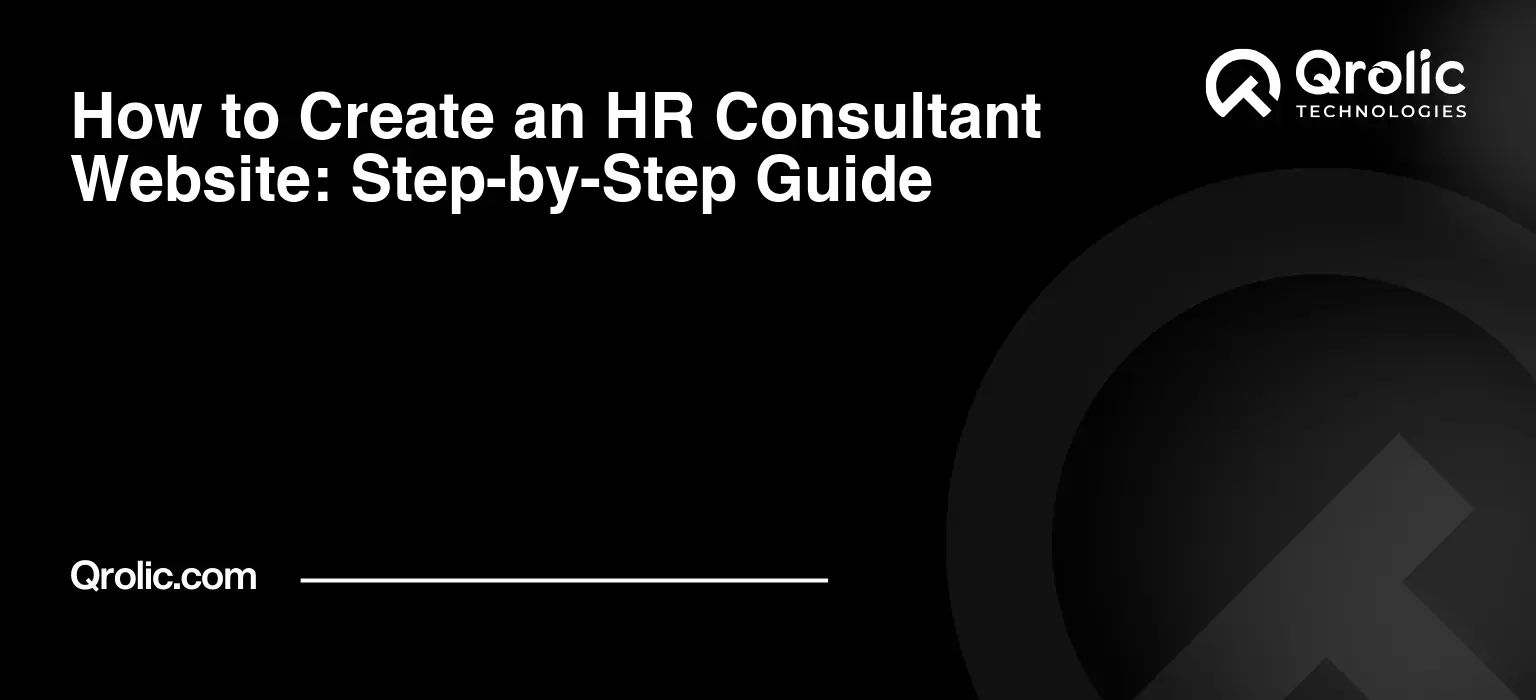Quick Summary:
- Your website builds trust and generates leads.
- Define your audience and set clear goals first.
- Choose a good platform like WordPress and host.
- Design for users, add SEO content, and track results.
Table of Contents
- Understanding the Foundation: Why Your HR Consultancy Needs a Website
- Defining Your Target Audience and Website Goals: Knowing Your “Who” and “What”
- Choosing the Right Domain Name and Web Hosting: Setting the Stage for Success
- Selecting the Right Website Platform (CMS): Choosing Your Digital Toolkit
- Designing a User-Friendly and Visually Appealing Website: The Art of Digital Persuasion
- Crafting Compelling Website Content: Speaking Directly to Your Ideal Client
- Implementing a Robust SEO Strategy: Climbing the Search Engine Rankings
- Integrating Social Media and Email Marketing: Building Relationships and Nurturing Leads
- Tracking and Analyzing Your Website Performance: Measuring Your Success
- Maintaining and Updating Your Website: Keeping Your Digital Presence Fresh
- Qrolic Technologies: Your Partner in Digital Transformation
- Launching Your Website and Beyond: The Ongoing Journey
Understanding the Foundation: Why Your HR Consultancy Needs a Website
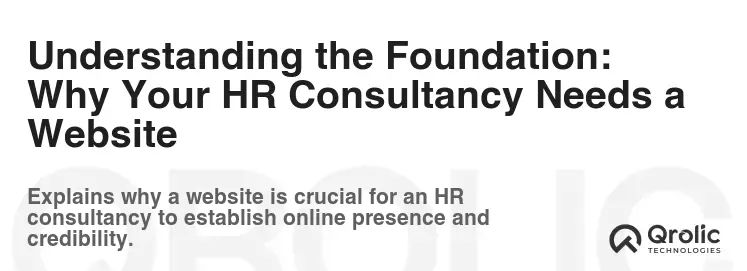
Before diving into the how, let’s address the why. In today’s digital landscape, your website is the cornerstone of your HR consultancy business. It’s not just an online brochure; it’s your digital storefront, your 24/7 salesperson, and your primary source of lead generation. Without a compelling website, you’re essentially invisible to a large segment of your potential client base.
Why a Website is Crucial for HR Consultancies:
-
Builds Credibility and Trust: A professional website instantly elevates your perceived authority and trustworthiness. Potential clients are more likely to entrust their HR needs to a consultancy with a well-designed and informative online presence. Think of it as your digital handshake – it needs to be firm and confident.
-
Showcases Your Expertise and Services: A website allows you to clearly and concisely articulate your specialized services, areas of expertise, and unique value proposition. You can showcase your successful case studies, client testimonials, and thought leadership content to demonstrate your capabilities.
-
Generates Leads and Attracts New Clients: A well-optimized website acts as a lead magnet, attracting potential clients actively searching for HR solutions online. Through strategic SEO (Search Engine Optimization), you can rank higher in search engine results and capture valuable organic traffic.
-
Facilitates Communication and Engagement: A website provides a central hub for communication with clients and prospects. You can include contact forms, live chat options, and email signup forms to nurture leads and foster engagement.
-
Provides a Platform for Content Marketing: Share insightful articles, blog posts, and downloadable resources to establish yourself as a thought leader in the HR industry. This valuable content attracts visitors to your website and positions you as a go-to resource for HR information.
-
Enhances Your Brand Identity: Your website should be a visual representation of your brand, reflecting your values, mission, and personality. Consistent branding across your website and other marketing materials reinforces your brand identity and creates a memorable impression.
-
Competitive Advantage: Many smaller HR consultancies still lack a robust online presence. Having a professionally designed and optimized website can give you a significant competitive edge, allowing you to stand out from the crowd.
Defining Your Target Audience and Website Goals: Knowing Your “Who” and “What”

Before you start designing your website, you need a clear understanding of who you’re trying to reach and what you want to achieve. This foundational understanding will guide your website design, content strategy, and overall marketing efforts.
1. Identifying Your Ideal Client:
-
Industry Focus: Do you specialize in specific industries like technology, healthcare, manufacturing, or finance? Identifying your niche allows you to tailor your website content and messaging to resonate with that audience.
-
Company Size: Do you primarily work with startups, small businesses, mid-sized companies, or large corporations? Different company sizes have different HR needs and priorities.
-
Geographic Location: Are you targeting clients locally, regionally, nationally, or internationally? This will influence your SEO strategy and language localization.
-
Specific HR Challenges: What are the common HR pain points faced by your target audience? Are they struggling with recruitment, employee retention, compliance, performance management, or something else?
Example: You might define your ideal client as a “rapidly growing tech startup in the San Francisco Bay Area with 50-150 employees, struggling to attract and retain top engineering talent.”
2. Defining Your Website Goals:
-
Lead Generation: Is your primary goal to generate leads for your HR consultancy services? If so, your website should focus on capturing contact information and nurturing leads through email marketing and other tactics.
-
Brand Awareness: Do you want to increase brand awareness and establish yourself as a thought leader in the HR industry? If so, your website should prioritize content marketing and social media integration.
-
Online Sales (if applicable): Do you offer any online HR services, such as training courses, templates, or software? If so, your website needs e-commerce functionality to facilitate online sales.
-
Client Education: Do you want to educate potential clients about the value of HR consulting and the benefits of working with your firm? Your website can serve as an educational resource with informative articles, case studies, and FAQs.
-
Recruitment (for your own firm): Are you looking to attract talented HR professionals to join your team? Your website can serve as a recruitment platform with job postings and information about your company culture.
Example: Your website goals might be: “Generate 50 qualified leads per month, increase brand awareness by 20% within the tech industry, and recruit two experienced HR consultants within the next six months.”
Choosing the Right Domain Name and Web Hosting: Setting the Stage for Success
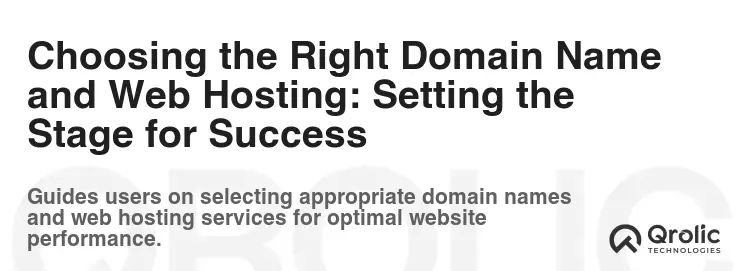
Your domain name is your website’s address on the internet, and your web hosting is the server that stores your website files and makes them accessible to visitors. Choosing the right domain name and web hosting is crucial for your website’s performance, security, and overall success.
1. Domain Name Selection:
-
Relevance: Choose a domain name that is relevant to your HR consultancy business and easy to remember. Ideally, it should include keywords related to HR consulting or your company name.
-
Brevity: Keep your domain name short and concise. Shorter domain names are easier to type and remember.
-
Memorability: Choose a domain name that is memorable and easy to pronounce. Avoid using complicated words or phrases.
-
Brandability: Select a domain name that reflects your brand identity and values.
-
Availability: Check the availability of your desired domain name before making a final decision. Use a domain name registrar like GoDaddy or Namecheap to search for available domains.
-
Top-Level Domain (TLD): Opt for a
.comTLD whenever possible, as it is the most recognizable and trusted TLD. Other options include.net,.org, and industry-specific TLDs like.hr.
Examples:
YourHRConsultancy.comHRSolutionsNow.comPeopleFirstHR.com[YourCompanyName]HR.com
2. Web Hosting Options:
-
Shared Hosting: Shared hosting is the most affordable option, where your website shares server resources with other websites. It’s suitable for small to medium-sized businesses with moderate traffic.
-
VPS Hosting (Virtual Private Server): VPS hosting provides you with dedicated server resources, offering better performance and security than shared hosting. It’s a good option for growing businesses with increasing traffic.
-
Dedicated Hosting: Dedicated hosting gives you an entire server dedicated to your website, providing maximum performance and control. It’s suitable for large businesses with high traffic and complex requirements.
-
Cloud Hosting: Cloud hosting uses a network of servers to host your website, offering scalability, reliability, and flexibility. It’s a popular choice for businesses of all sizes.
Factors to Consider When Choosing a Web Hosting Provider:
-
Uptime Guarantee: Look for a web hosting provider with a high uptime guarantee (e.g., 99.9%).
-
Server Performance: Choose a web hosting provider with fast server speeds and reliable performance.
-
Security Features: Ensure the web hosting provider offers robust security features, such as firewalls, malware scanning, and DDoS protection.
-
Customer Support: Select a web hosting provider with responsive and helpful customer support.
-
Scalability: Choose a web hosting provider that allows you to easily scale your resources as your business grows.
Popular Web Hosting Providers:
- Bluehost
- SiteGround
- HostGator
- DreamHost
- AWS (Amazon Web Services)
- Google Cloud Platform
Selecting the Right Website Platform (CMS): Choosing Your Digital Toolkit
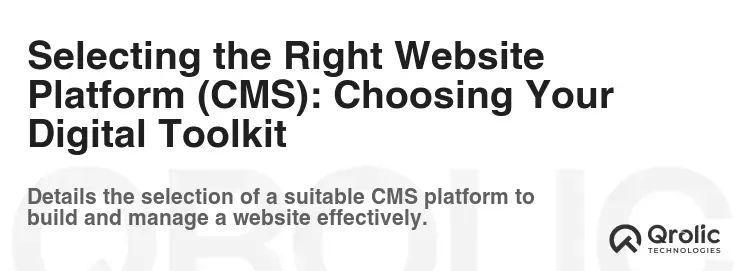
Your website platform, also known as a Content Management System (CMS), is the software that allows you to create, manage, and update your website content without needing to know how to code. Choosing the right CMS is crucial for the ease of use, flexibility, and scalability of your website.
1. wordpress: The Industry Standard
WordPress is the most popular CMS in the world, powering over 40% of all websites on the internet. It’s a versatile and powerful platform that’s suitable for businesses of all sizes.
Pros:
- Ease of Use: WordPress is relatively easy to learn and use, even for beginners.
- Flexibility: WordPress offers a vast library of themes and plugins, allowing you to customize your website to your exact needs.
- SEO-Friendly: WordPress is inherently SEO-friendly, making it easier to rank higher in search engine results.
- Large Community: WordPress has a large and active community of users and developers, providing ample support and resources.
- Cost-Effective: WordPress itself is free, but you may need to pay for premium themes and plugins.
Cons:
- Security: wordpress websites can be vulnerable to security threats if not properly maintained and secured.
- Maintenance: WordPress requires regular updates and maintenance to ensure optimal performance and security.
- Customization Complexity: Extensive customization may require some coding knowledge.
2. Other CMS Options:
-
Squarespace: Squarespace is a user-friendly website builder that’s known for its beautiful templates and ease of use. It’s a good option for small businesses and individuals who want a simple and visually appealing website. However, it offers less flexibility than WordPress.
-
Wix: Wix is another popular website builder that offers a drag-and-drop interface and a wide range of templates. It’s similar to Squarespace in terms of ease of use but also has limitations in terms of customization and SEO.
-
Joomla: Joomla is a more advanced CMS than WordPress, offering greater flexibility and control. However, it’s also more complex to learn and use.
-
Drupal: Drupal is a powerful and highly customizable CMS that’s suitable for complex websites and applications. However, it requires significant technical expertise.
For an HR consultancy website, WordPress is generally the best choice due to its flexibility, SEO-friendliness, and ease of use. You can use a premium WordPress theme specifically designed for consulting businesses to create a professional and engaging website.
Designing a User-Friendly and Visually Appealing Website: The Art of Digital Persuasion

Your website’s design plays a crucial role in attracting and retaining visitors. A user-friendly and visually appealing website will keep visitors engaged, encourage them to explore your services, and ultimately convert them into clients.
1. Choosing a Professional Theme:
-
Consulting-Specific Themes: Look for WordPress themes specifically designed for consulting businesses. These themes typically include features and layouts that are relevant to the industry, such as service pages, case studies, and team member profiles.
-
Clean and Modern Design: Choose a theme with a clean and modern design that reflects your brand identity. Avoid cluttered layouts and outdated design elements.
-
Mobile-Responsive Design: Ensure the theme is mobile-responsive, meaning it adapts seamlessly to different screen sizes and devices. This is crucial for providing a good user experience on mobile devices.
-
Customization Options: Select a theme that offers ample customization options, allowing you to personalize the design to your specific needs.
-
Page Builder Integration: Choose a theme that integrates with a popular page builder plugin like Elementor or Beaver Builder, making it easy to create and customize pages without coding.
2. Essential Website Pages:
-
Homepage: Your homepage is the first impression you make on visitors. It should clearly communicate your value proposition, showcase your key services, and entice visitors to explore further.
-
About Us: Your About Us page should tell your company’s story, highlighting your mission, values, and expertise. It’s an opportunity to build trust and connect with potential clients on a personal level.
-
Services: Your Services pages should detail the specific HR services you offer, such as recruitment, training, compliance, or compensation. Clearly explain the benefits of each service and provide compelling case studies.
-
Case Studies: Case studies are powerful tools for demonstrating your expertise and success. Showcase your best projects and quantify the results you achieved for your clients.
-
Blog: Your blog is a platform for sharing insightful articles, blog posts, and industry news. It’s a great way to attract visitors to your website, establish yourself as a thought leader, and improve your SEO.
-
Contact Us: Your Contact Us page should include your contact information, a contact form, and a map of your location (if applicable). Make it easy for visitors to get in touch with you.
-
Testimonials: Include client testimonials throughout your website to build trust and social proof.
3. Key Design Principles:
-
Visual Hierarchy: Use visual hierarchy to guide visitors’ eyes to the most important elements on your page. Use headings, subheadings, and visual cues to create a clear and logical flow.
-
White Space: Use plenty of white space to create a clean and uncluttered design. White space helps to improve readability and focus attention on the key elements.
-
Color Palette: Choose a color palette that reflects your brand identity and evokes the desired emotions. Use a limited number of colors and ensure they complement each other.
-
Typography: Select fonts that are easy to read and visually appealing. Use different font sizes and styles to create visual interest and highlight important information.
-
Images and Videos: Use high-quality images and videos to enhance your website’s visual appeal and engagement. Choose images that are relevant to your content and reflect your brand identity.
4. User Experience (UX) Considerations:
-
Navigation: Ensure your website navigation is clear, intuitive, and easy to use.
-
Page Load Speed: Optimize your website for fast page load speed. slow loading websites can frustrate visitors and negatively impact your SEO.
-
Mobile-Friendliness: Ensure your website is fully mobile-responsive and provides a seamless user experience on all devices.
-
Accessibility: Design your website to be accessible to users with disabilities.
Crafting Compelling Website Content: Speaking Directly to Your Ideal Client
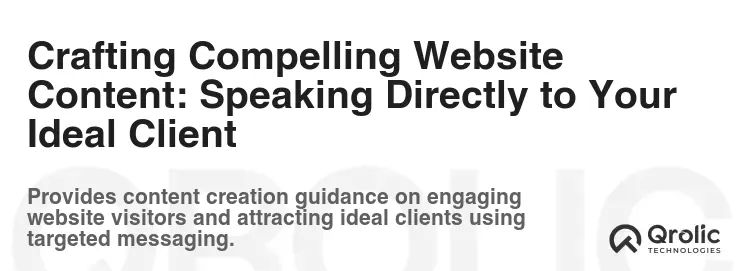
Your website content is the heart and soul of your online presence. It’s what attracts visitors, engages them, and ultimately converts them into clients. Your content should be informative, engaging, and tailored to your target audience.
1. Understanding Your Audience’s Needs:
- Identify Pain Points: What are the common HR challenges faced by your target audience?
- Address Questions: What questions do potential clients have about HR consulting services?
- Provide Solutions: How can your HR consultancy services help solve their problems?
2. Content Pillars and Keyword Research:
-
Identify Core Topics: Determine the key topics that are relevant to your HR consultancy business and your target audience. These topics will serve as the foundation for your content strategy.
-
Keyword Research: Conduct thorough keyword research to identify the terms and phrases that your target audience is using to search for HR solutions online. Use tools like Google Keyword Planner, SEMrush, or Ahrefs to find relevant keywords.
-
Content Pillar Strategy: Develop content pillars around your core topics. A content pillar is a comprehensive piece of content that covers a specific topic in detail. You can then create supporting content around your content pillars, such as blog posts, articles, and infographics.
Examples of Content Pillars for an HR Consultancy Website:
- Recruitment and Talent Acquisition: This pillar could cover topics such as sourcing candidates, interviewing techniques, employer branding, and onboarding.
- Employee Retention and Engagement: This pillar could cover topics such as employee surveys, performance management, recognition programs, and workplace culture.
- HR Compliance and Legal Issues: This pillar could cover topics such as employment law, workplace safety, and employee benefits.
- Compensation and Benefits: This pillar could cover topics such as salary benchmarking, compensation strategy, and employee benefits programs.
- Training and Development: This pillar could cover topics such as leadership development, skills training, and employee development programs.
3. Writing Engaging and Informative Content:
-
Clear and Concise Language: Use clear and concise language that is easy to understand. Avoid jargon and technical terms.
-
Focus on Benefits: Focus on the benefits of your HR consultancy services rather than just listing the features. Explain how your services can help clients achieve their goals and solve their problems.
-
Use Storytelling: Use storytelling to connect with your audience on an emotional level. Share case studies and client testimonials to illustrate the impact of your work.
-
Call to Action: Include clear and compelling calls to action on every page of your website. Encourage visitors to contact you, download a resource, or sign up for your email list.
-
Optimize for Readability: Use headings, subheadings, bullet points, and white space to improve readability.
-
Proofread Carefully: Proofread your content carefully for grammar and spelling errors.
4. Content Optimization for SEO:
-
Keyword Integration: Integrate your target keywords naturally into your website content. Avoid keyword stuffing.
-
Meta Descriptions: Write compelling meta descriptions for each page of your website. Meta descriptions are short snippets of text that appear in search engine results.
-
Image Optimization: Optimize your images for SEO by using descriptive file names and alt tags.
-
Internal Linking: Link to relevant pages within your website to improve navigation and SEO.
-
External Linking: Link to reputable websites to add credibility to your content.
Implementing a Robust SEO Strategy: Climbing the Search Engine Rankings
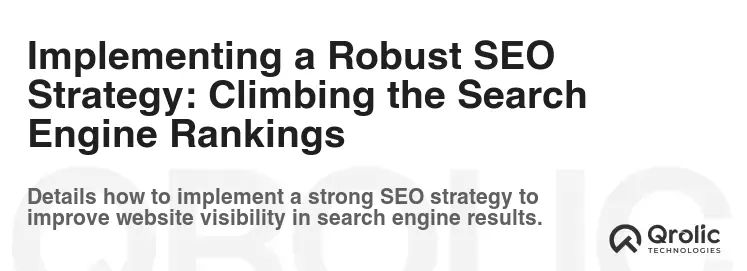
Search Engine Optimization (SEO) is the process of optimizing your website to rank higher in search engine results. A strong SEO strategy is crucial for driving organic traffic to your website and attracting new clients.
1. Keyword Research and Targeting:
- Identify Relevant Keywords: Use keyword research tools to identify the keywords that your target audience is using to search for HR solutions online.
- Categorize Keywords: Group keywords into relevant categories based on your services and target audience.
- Target Long-Tail Keywords: Focus on long-tail keywords, which are longer and more specific phrases that people use when searching for information online. Long-tail keywords tend to have lower competition and higher conversion rates.
2. On-Page Optimization:
- Title Tags: Optimize your title tags for each page of your website. Title tags are the titles that appear in search engine results and are a crucial ranking factor.
- Meta Descriptions: Write compelling meta descriptions for each page of your website. Meta descriptions are short snippets of text that appear in search engine results and can influence click-through rates.
- Header Tags (H1-H6): Use header tags (H1-H6) to structure your content and highlight important information.
- URL Structure: Use descriptive and keyword-rich URLs.
- Image Optimization: Optimize your images for SEO by using descriptive file names and alt tags.
- Internal Linking: Link to relevant pages within your website to improve navigation and SEO.
- Content Quality and Relevance: Create high-quality, informative, and engaging content that is relevant to your target audience and optimized for your target keywords.
3. Off-Page Optimization:
- Link Building: Build high-quality backlinks from other reputable websites. Backlinks are a crucial ranking factor.
- Directory Submissions: Submit your website to relevant online directories.
- Social Media Marketing: Promote your website content on social media to increase visibility and drive traffic.
- Guest Blogging: Write guest blog posts for other websites in your industry to build backlinks and increase brand awareness.
- Online Reputation Management: Monitor your online reputation and address any negative reviews or comments.
4. Technical SEO:
- Website Speed: Optimize your website for fast page load speed.
- Mobile-Friendliness: Ensure your website is fully mobile-responsive.
- Site Architecture: Create a clear and logical site architecture that is easy for search engines to crawl and index.
- XML Sitemap: Submit an XML sitemap to search engines to help them crawl your website more efficiently.
- Robots.txt File: Use a robots.txt file to control which pages of your website search engines can crawl.
- SSL Certificate: Install an SSL certificate to secure your website and protect user data.
5. Local SEO (if applicable):
- Google My Business: Claim and optimize your Google My Business listing.
- Local Citations: Build local citations by listing your business on relevant online directories.
- Local Keyword Targeting: Target local keywords in your website content and SEO efforts.
6. Monitoring and Analysis:
- Google Analytics: Use Google Analytics to track your website traffic, keyword rankings, and other important metrics.
- Google Search Console: Use Google Search Console to monitor your website’s performance in search engine results and identify any technical issues.
- Regular Reporting: Generate regular reports to track your SEO progress and identify areas for improvement.
Integrating Social Media and Email Marketing: Building Relationships and Nurturing Leads
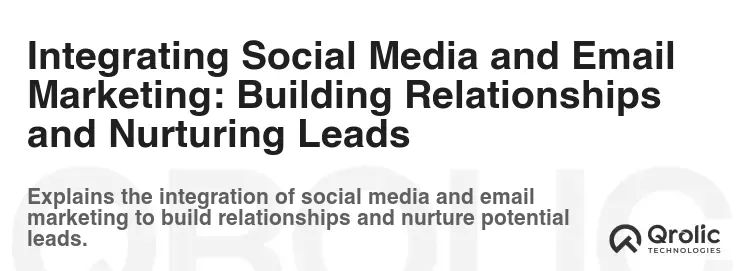
Social media and email marketing are powerful tools for building relationships with potential clients, nurturing leads, and driving traffic to your website.
1. Social Media Marketing:
- Choose the Right Platforms: Focus on the social media platforms where your target audience is most active.
- Create Engaging Content: Share valuable content that is relevant to your target audience.
- Engage with Your Audience: Respond to comments and questions, and participate in relevant conversations.
- Promote Your Website Content: Share your website content on social media to drive traffic and increase visibility.
- Run Contests and Giveaways: Run contests and giveaways to generate excitement and attract new followers.
- Use Social Media Advertising: Use social media advertising to reach a wider audience and target specific demographics.
2. Email Marketing:
- Build an Email List: Offer a valuable incentive, such as a free ebook or checklist, to encourage visitors to sign up for your email list.
- Segment Your Email List: Segment your email list based on interests and demographics.
- Send Targeted Emails: Send targeted emails that are relevant to each segment of your email list.
- Nurture Leads: Nurture leads with valuable content and personalized offers.
- Automate Your Email Marketing: Use email marketing automation tools to automate your email marketing efforts.
- Track Your Results: Track your email marketing results to measure the effectiveness of your campaigns.
Tracking and Analyzing Your Website Performance: Measuring Your Success
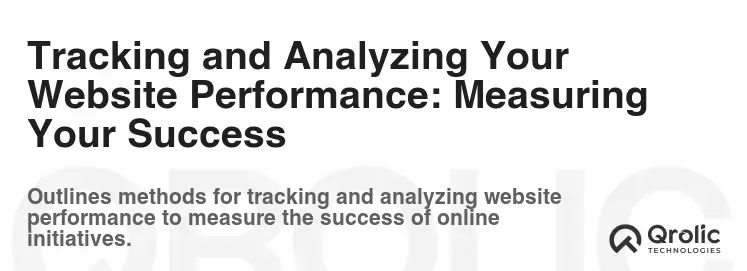
Tracking and analyzing your website performance is crucial for understanding what’s working and what’s not. By monitoring key metrics, you can identify areas for improvement and optimize your website for better results.
1. Key Metrics to Track:
- Website Traffic: Track the number of visitors to your website, as well as the sources of traffic (e.g., organic search, social media, referral websites).
- Bounce Rate: Monitor the bounce rate, which is the percentage of visitors who leave your website after viewing only one page. A high bounce rate may indicate that your website is not engaging or relevant to your target audience.
- Time on Page: Track the average time visitors spend on each page of your website. Longer time on page indicates that visitors are engaged with your content.
- Conversion Rate: Monitor the conversion rate, which is the percentage of visitors who complete a desired action, such as filling out a contact form or downloading a resource.
- Keyword Rankings: Track your website’s keyword rankings in search engine results.
- Lead Generation: Track the number of leads generated through your website.
- Sales: Track the number of sales generated through your website (if applicable).
2. Tools for Tracking and Analysis:
- Google Analytics: Google Analytics is a free web analytics service that provides detailed information about your website traffic, user behavior, and conversions.
- Google Search Console: Google Search Console is a free tool that helps you monitor your website’s performance in search engine results.
- SEO Tools: Use SEO tools like SEMrush, Ahrefs, or Moz to track your keyword rankings, backlinks, and other important SEO metrics.
3. Using Data to Improve Your Website:
- Identify Areas for Improvement: Analyze your website data to identify areas for improvement, such as pages with high bounce rates or low conversion rates.
- Test Different Strategies: Test different strategies to improve your website performance, such as changing your website design, updating your content, or optimizing your SEO.
- Track Your Results: Track the results of your changes to see what’s working and what’s not.
- Continuously Optimize: Continuously optimize your website based on your data and insights.
Maintaining and Updating Your Website: Keeping Your Digital Presence Fresh
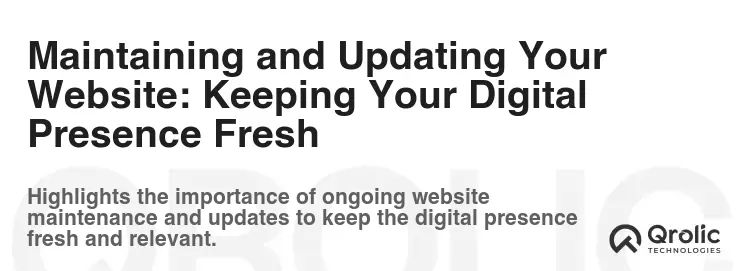
Your website is not a one-time project; it requires ongoing maintenance and updates to ensure it remains secure, functional, and relevant.
1. Regular Updates:
- CMS Updates: Regularly update your CMS (e.g., WordPress) to the latest version to ensure security and functionality.
- Plugin Updates: Regularly update your plugins to the latest versions to fix bugs and improve performance.
- Theme Updates: Regularly update your theme to the latest version to ensure compatibility with the latest CMS and plugin versions.
2. Security Maintenance:
- Security Plugins: Install and configure security plugins to protect your website from malware, hacking attempts, and other security threats.
- Strong Passwords: Use strong passwords for all your website accounts.
- Regular Backups: Back up your website regularly to protect your data in case of a security breach or other disaster.
3. Content Updates:
- Fresh Content: Regularly add fresh content to your website, such as blog posts, articles, and case studies.
- Update Existing Content: Update your existing content to ensure it is accurate, relevant, and up-to-date.
- Remove Outdated Content: Remove outdated content from your website to avoid confusing visitors.
4. Performance Monitoring:
- Website Speed: Monitor your website speed and optimize it for fast page load times.
- Broken Links: Check for and fix broken links on your website.
- Mobile-Friendliness: Regularly test your website on different mobile devices to ensure it is fully mobile-responsive.
5. User Experience (UX) Improvements:
- Gather Feedback: Gather feedback from your website visitors to identify areas for improvement.
- A/B Testing: Conduct A/B testing to test different design and content elements and see what works best.
- Implement Changes: Implement changes to improve the user experience based on feedback and testing results.
Qrolic Technologies: Your Partner in Digital Transformation
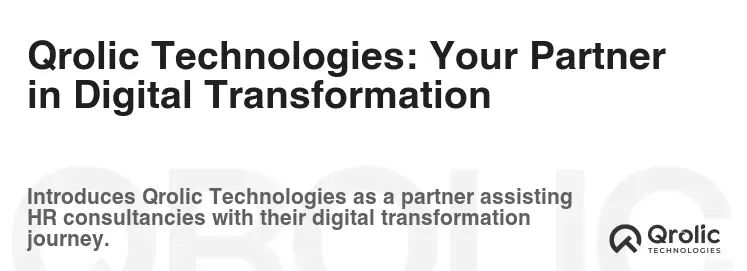
Qrolic Technologies (https://qrolic.com/) is a leading provider of digital transformation solutions, specializing in helping businesses like HR consultancies thrive in the digital age. We understand the unique challenges faced by HR firms and offer a comprehensive suite of services to help you build a strong online presence, attract new clients, and grow your business.
How Qrolic Technologies Can Help Your HR Consultancy:
- Website Design and Development: We create stunning, user-friendly, and SEO-optimized websites that showcase your expertise and attract your target audience.
- SEO Services: Our expert SEO team will help you rank higher in search engine results, driving organic traffic to your website and generating valuable leads.
- Content Marketing: We develop engaging and informative content that attracts visitors, establishes you as a thought leader, and nurtures leads.
- Social Media Marketing: We manage your social media presence, creating engaging content, building relationships with potential clients, and driving traffic to your website.
- Email Marketing: We help you build an email list, create targeted email campaigns, and nurture leads through personalized communication.
- Digital Strategy Consulting: We provide expert guidance on developing and implementing a comprehensive digital strategy that aligns with your business goals.
Why Choose Qrolic Technologies?
- Experienced Team: We have a team of experienced professionals with expertise in website design, SEO, content marketing, social media marketing, and email marketing.
- Customized Solutions: We provide customized solutions tailored to the specific needs of your HR consultancy.
- Results-Driven Approach: We are committed to delivering measurable results and helping you achieve your business goals.
- Excellent Customer Support: We provide excellent customer support and are always available to answer your questions and address your concerns.
Partner with Qrolic Technologies and let us help you transform your HR consultancy into a digital powerhouse. Visit our website at https://qrolic.com/ to learn more about our services and how we can help you grow your business.
Launching Your Website and Beyond: The Ongoing Journey
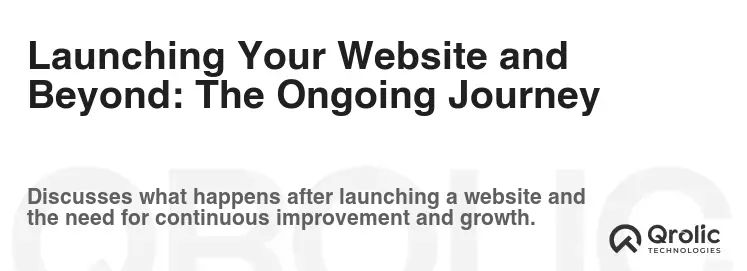
Launching your website is just the beginning of your online journey. It’s crucial to continue monitoring your website performance, updating your content, and adapting to the ever-changing digital landscape.
1. Post-Launch Checklist:
- Test Your Website: Thoroughly test your website on different devices and browsers to ensure it is working properly.
- Submit Your Website to Search Engines: Submit your website to search engines like Google and Bing.
- Promote Your Website: Promote your website on social media, email marketing, and other channels.
- Monitor Your Website Traffic: Monitor your website traffic and identify any issues or areas for improvement.
- Gather Feedback: Gather feedback from your website visitors to identify areas for improvement.
2. Ongoing Marketing Efforts:
- Content Marketing: Continue to create and publish high-quality content that is relevant to your target audience.
- SEO: Continue to optimize your website for search engines.
- Social Media Marketing: Continue to engage with your audience on social media.
- Email Marketing: Continue to nurture leads and communicate with your email list.
- Paid Advertising: Consider using paid advertising to reach a wider audience.
3. Adapting to Change:
- Stay Up-to-Date: Stay up-to-date with the latest trends in HR, digital marketing, and website technology.
- Adapt Your Strategy: Adapt your website and marketing strategy as needed to stay relevant and competitive.
- Continuously Improve: Continuously improve your website and marketing efforts based on data and feedback.
Creating a successful HR consultancy website is an ongoing journey that requires dedication, effort, and a willingness to adapt. By following the steps outlined in this complete tutorial, you can build a website that attracts new clients, establishes you as a thought leader, and helps you grow your business. Remember to partner with experts like Qrolic Technologies to accelerate your success and navigate the complexities of the digital landscape. Good luck!
